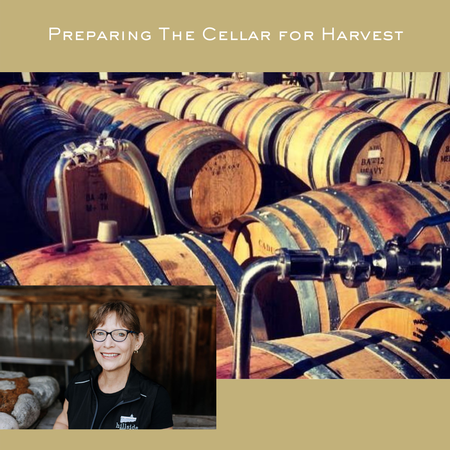Be kind, be calm, be safe, make wine…
As we try to be patient, waiting for the grapes to ripen to perfection, we have been racking some of the 2019 red wines from barrels and blending. Pinot Noir, Gamay, Syrah and some of the Merlot need to be out of barrel and bottled to make room for the 2020 harvest.
Every year we perform a number of barrel trials—testing out various oak forests, coopers (barrel makers), and toasting processes. The small barrel size—225 or 265 liters–allows us to have many small trials in the cellar so we can determine which barrel type works best for which variety, or even which block of grapes. We keep each type of new oak separate throughout the year, doing rack-and-returns individually so we can accurately evaluate the effect of the barrel.
New oak will contribute flavours to the wine, but more importantly, it helps to structure the tannins in the wine, as wine tannins interact with the tannin in the wood. The grain, method and length of air-drying, and toasting procedures all impact this effect.
We evaluate the new barrels through the year, every time we rack-and-return, but we are careful not to pass judgement on any barrel until the time of blending. Many’s the time a barrel which was hated
at 3 months became the star at 9 or 12 or 18 months!
Barrels are used for up to 7 years as their effect can be evident for that many “fills”. Even when there is no flavour or structure contribution, we have learned that wine changes by virtue of spending time in small wooden vessels—partly through evaporation and partly through very slow exposure to minute amounts of oxygen. Once these effects are no longer obvious, and the wine shows no enhancement from barrel age, the barrels are re-purposed—to planters or sometimes platters. Sometimes a barrel is taken out of rotation even sooner, based on taste. There is no “witness-protection program” for suspect barrels!
What else are we doing before harvest?
Well there’s— order glass and corks and get labels printed for September bottling, annual maintenance on crush equipment (bin-tipper, sorting line, de-stemmer, must pump, press), secure raw materials for crush, ensure safety protocols in place, hire and train crush crew, order crush t-shirts with cute saying on the back, pressure wash each grape bin to within a cm of its life, walk the vineyards–frown while talking to vineyard managers (keeps ‘em on their toes), receive and position rental tanks for vintage (2 this year), stencil codes onto new barrels, organize waste pickup (stems and skins) with composting company and distillery (lees), bottle 2019 reds to make room, sample grapes, pray for sun until Remembrance day….

